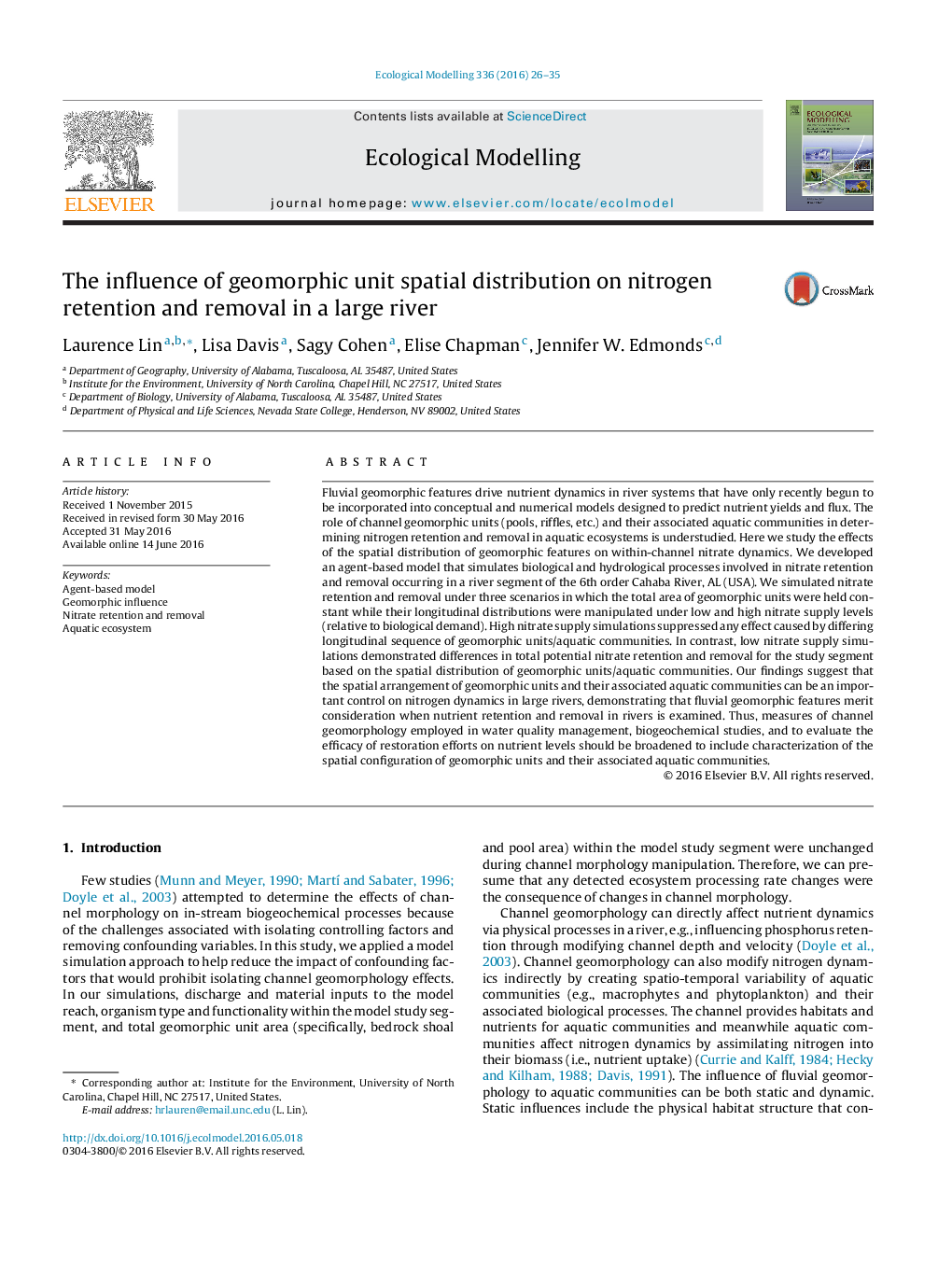| Article ID | Journal | Published Year | Pages | File Type |
|---|---|---|---|---|
| 4375519 | Ecological Modelling | 2016 | 10 Pages |
•Geomorphic influence on nitrogen dynamics was simulated using an agent-based model.•Spatial distribution of geomorphic units modifies nitrogen dynamics under low nitrogen supply.•High nitrogen supply suppresses geomorphic influence.
Fluvial geomorphic features drive nutrient dynamics in river systems that have only recently begun to be incorporated into conceptual and numerical models designed to predict nutrient yields and flux. The role of channel geomorphic units (pools, riffles, etc.) and their associated aquatic communities in determining nitrogen retention and removal in aquatic ecosystems is understudied. Here we study the effects of the spatial distribution of geomorphic features on within-channel nitrate dynamics. We developed an agent-based model that simulates biological and hydrological processes involved in nitrate retention and removal occurring in a river segment of the 6th order Cahaba River, AL (USA). We simulated nitrate retention and removal under three scenarios in which the total area of geomorphic units were held constant while their longitudinal distributions were manipulated under low and high nitrate supply levels (relative to biological demand). High nitrate supply simulations suppressed any effect caused by differing longitudinal sequence of geomorphic units/aquatic communities. In contrast, low nitrate supply simulations demonstrated differences in total potential nitrate retention and removal for the study segment based on the spatial distribution of geomorphic units/aquatic communities. Our findings suggest that the spatial arrangement of geomorphic units and their associated aquatic communities can be an important control on nitrogen dynamics in large rivers, demonstrating that fluvial geomorphic features merit consideration when nutrient retention and removal in rivers is examined. Thus, measures of channel geomorphology employed in water quality management, biogeochemical studies, and to evaluate the efficacy of restoration efforts on nutrient levels should be broadened to include characterization of the spatial configuration of geomorphic units and their associated aquatic communities.
